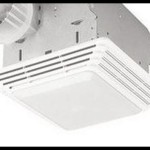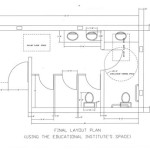Best Duct To Use For Bathroom Exhaust Fan
Bathroom exhaust fans play a crucial role in maintaining healthy indoor air quality by removing excess moisture, odors, and airborne pollutants. A key component of an effective exhaust system is the ductwork, which channels the extracted air outdoors. Choosing the correct ducting material and size significantly impacts the fan's performance and overall effectiveness.
Several factors influence the selection of the optimal ductwork for a bathroom exhaust fan. These include the fan's airflow rating, the length of the duct run, the number of bends or elbows in the duct, and local building codes. Understanding these elements helps ensure proper ventilation and prevents moisture-related problems like mold and mildew growth.
Rigid Metal Ducts:
Galvanized steel and aluminum are common choices for rigid ductwork. Galvanized steel offers excellent durability and fire resistance, making it a suitable option for installations running through attics or other areas exposed to potential heat sources. Aluminum is lighter and easier to install than steel, but it can be more prone to denting.Rigid metal ducts generally offer superior airflow performance due to their smooth interior surfaces. They are also less prone to accumulating dust and debris compared to flexible ducts, contributing to improved indoor air quality. However, rigid ducts require more precise cutting and fitting, making installation potentially more complex.
Flexible Ducts:
Flexible ducts, typically made of aluminum foil or plastic, offer greater flexibility in navigating tight spaces and around obstacles. This ease of installation often makes them a popular choice for DIY projects. However, flexible ducts have a higher tendency to restrict airflow due to their corrugated interior surfaces. This restriction can reduce the exhaust fan's efficiency and increase noise levels.When using flexible ducts, it's essential to keep the runs as short and straight as possible to minimize airflow resistance. Excessive bending or compression of the ductwork can significantly impede the fan's performance. Additionally, flexible plastic ducts should not be used for dryer vents due to fire hazards.
Duct Sizing:
Proper duct sizing is critical for optimal exhaust fan performance. The duct size should match the fan's airflow rating, measured in cubic feet per minute (CFM). Using a duct that is too small restricts airflow and reduces the fan's effectiveness, while a duct that is too large can lead to reduced air velocity and potential condensation issues.Consulting the manufacturer's specifications for both the exhaust fan and the ductwork is essential for determining the correct size. Building codes also specify minimum duct sizes for bathroom exhaust fans, ensuring adequate ventilation.
Insulation:
Insulating the ductwork, especially in unheated spaces like attics, helps prevent condensation and improves energy efficiency. Insulation minimizes temperature differences between the air inside the duct and the surrounding environment, reducing the likelihood of condensation forming on the duct's exterior. This is particularly important in colder climates where warm, moist air expelled from the bathroom can quickly cool and condense within uninsulated ducts.Terminating the Duct:
Proper termination of the ductwork is crucial for effective ventilation. The duct should terminate outdoors, preferably through a roof vent or a wall vent specifically designed for exhaust fans. Terminating the duct in an attic or other enclosed space can lead to moisture accumulation, potentially causing structural damage and promoting mold growth. Exterior vents should be equipped with backdraft dampers to prevent outside air from entering the ductwork.Building Codes and Regulations:
Local building codes and regulations often dictate specific requirements for bathroom exhaust fan installation, including duct material, sizing, and termination. Consulting these codes before undertaking any installation ensures compliance and safe, effective operation of the exhaust system. These codes are designed to safeguard occupants and prevent potential hazards associated with improper ventilation.Maintenance:
Regular maintenance of the ductwork is essential for optimal performance. Periodically inspecting the ducts for obstructions, leaks, and signs of damage helps ensure efficient airflow and prevents potential problems. Cleaning the ducts can remove accumulated dust and debris, further improving indoor air quality and extending the life of the exhaust fan.Selecting the appropriate ductwork for a bathroom exhaust fan involves careful consideration of various factors, including material, size, and insulation. Proper installation and adherence to building codes are crucial for maximizing the fan's effectiveness and maintaining a healthy indoor environment. The information provided here serves as a general guide. Consulting with a qualified HVAC professional is recommended for specific project requirements and local code compliance.

Venting A Bath Fan In Cold Climate Fine Homebuilding

What Duct To Use For A Bathroom Fan Fastlec

What Parts Do I Need To Install An Inline Fan In My Bathroom

How To Use An In Line Exhaust Fan Vent Two Bathrooms Diy Family Handyman

How Does Ducting Impact Fan Performance Fanco

What Is The Best Duct For Bathroom Ventilation Continental Fan

What Extractor Fan Do I Need For My Bathroom Blog World

Elitco Tubular Duct Fan 5 6 Super Slim Ceiling Mounted Bathroom Exhaust Fire Ant C5 Louver Kitchen Ventilation

Duct It Right How To Properly Your Exhaust Fan Air King

Bathroom Exhaust Fan Guide The Home Depot
Related Posts







